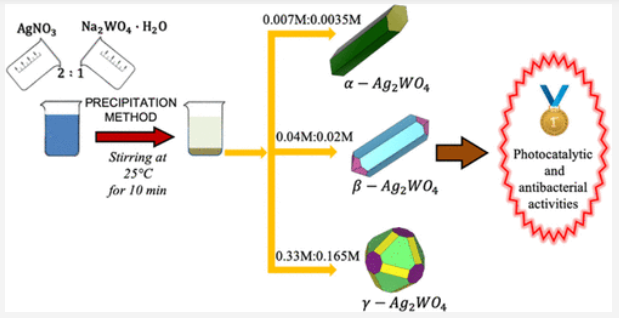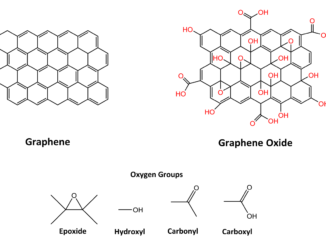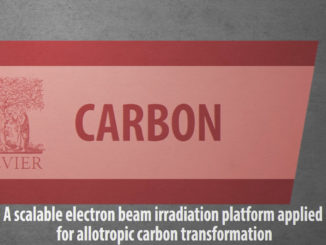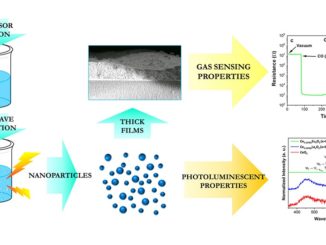
Selective Synthesis of α-, β-, and γ-Ag2WO4 Polymorphs: Promising Platforms for Photocatalytic and Antibacterial Materials
Abstract: Silver tungstate (Ag2WO4) shows structural polymorphism with different crystalline phases, namely, orthorhombic, hexagonal, and cubic structures that are commonly known as α, β, and γ, respectively. In this work, these Ag2WO4 polymorphs were selectively and successfully synthesized through a simple precipitation route at ambient temperature. The polymorph-controlled synthesis was conducted by means of the volumetric ratios of the silver nitrate/tungstate sodium dehydrate precursors in solution. The structural and electronic properties of the as-synthesized Ag2WO4 polymorphs were investigated by using a combination of X-ray diffraction and Rietveld refinements, X-ray absorption spectroscopy, X-ray absorption near-edge structure spectroscopy, field-emission scanning electron microscopy images, and photoluminescence. To complement and rationalize the experimental results, first-principles calculations, at the density functional theory level, were carried out, leading to an unprecedented glimpse into the atomic-level properties of the morphology and the exposed surfaces of Ag2WO4 polymorphs. Following the analysis of the local coordination of Ag and W cations (clusters) at each exposed surface of the three polymorphs, the structure–property relationship between the morphology and the photocatalytic and antibacterial activities against amiloride degradation under ultraviolet light irradiation and methicillin-resistant Staphylococcus aureus, respectively, was investigated. A possible mechanism of the photocatalytic and antibacterial activity as well the formation process and growth of the polymorphs is also explored and proposed.
Author(s): Roca, R.A.; Gouveia, A.F.; Foggi, C.C.; Lemos, P.S.; Gracia, L.; Silva, L.F.; Vergani, C.E.; San-Miguel, M.; Longo, E.; Andrés, J.
Inorg. Chem.
Published: December 29, 2020




